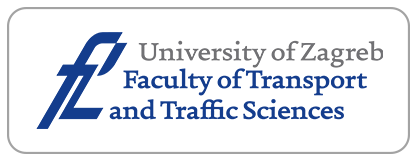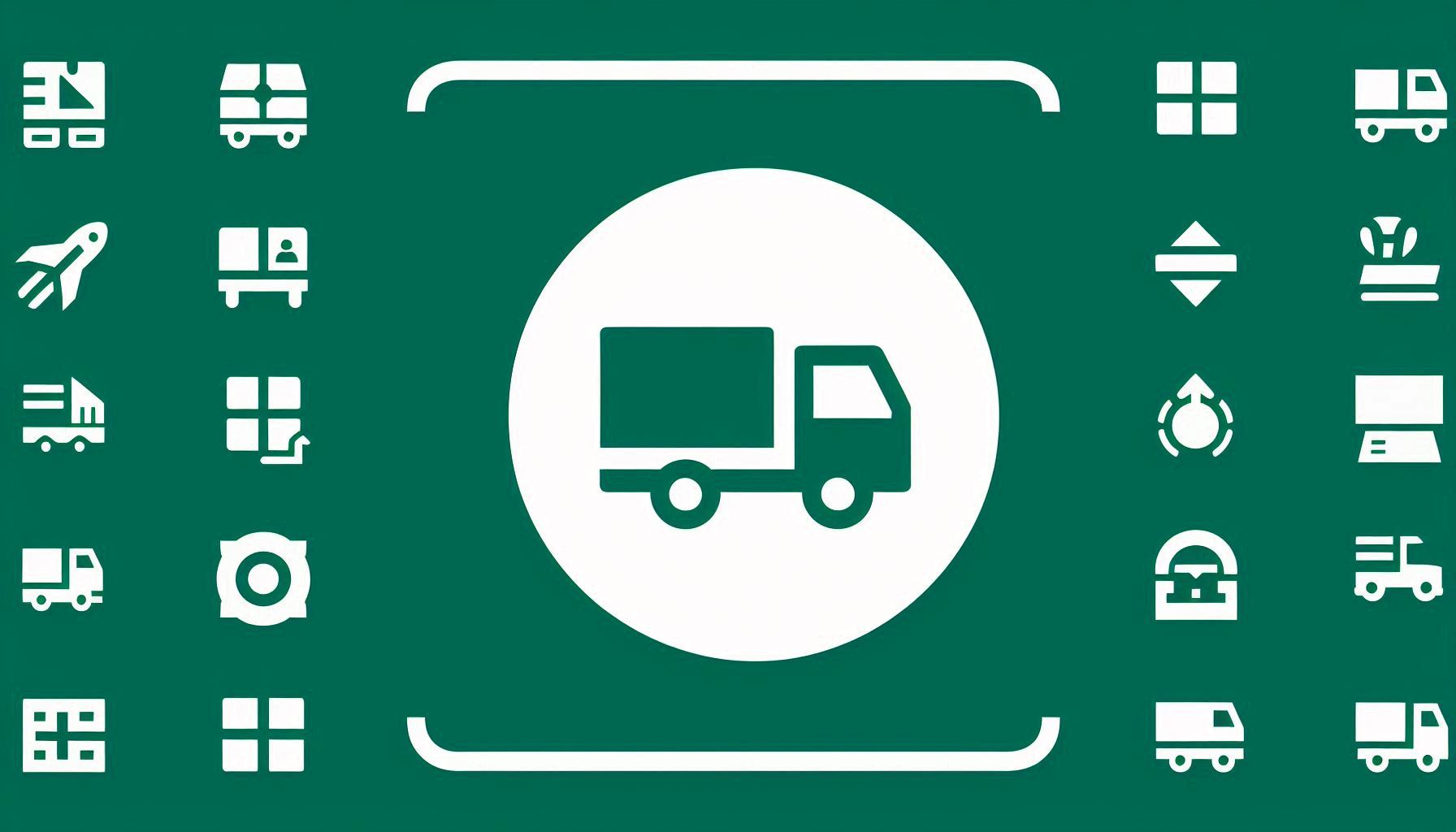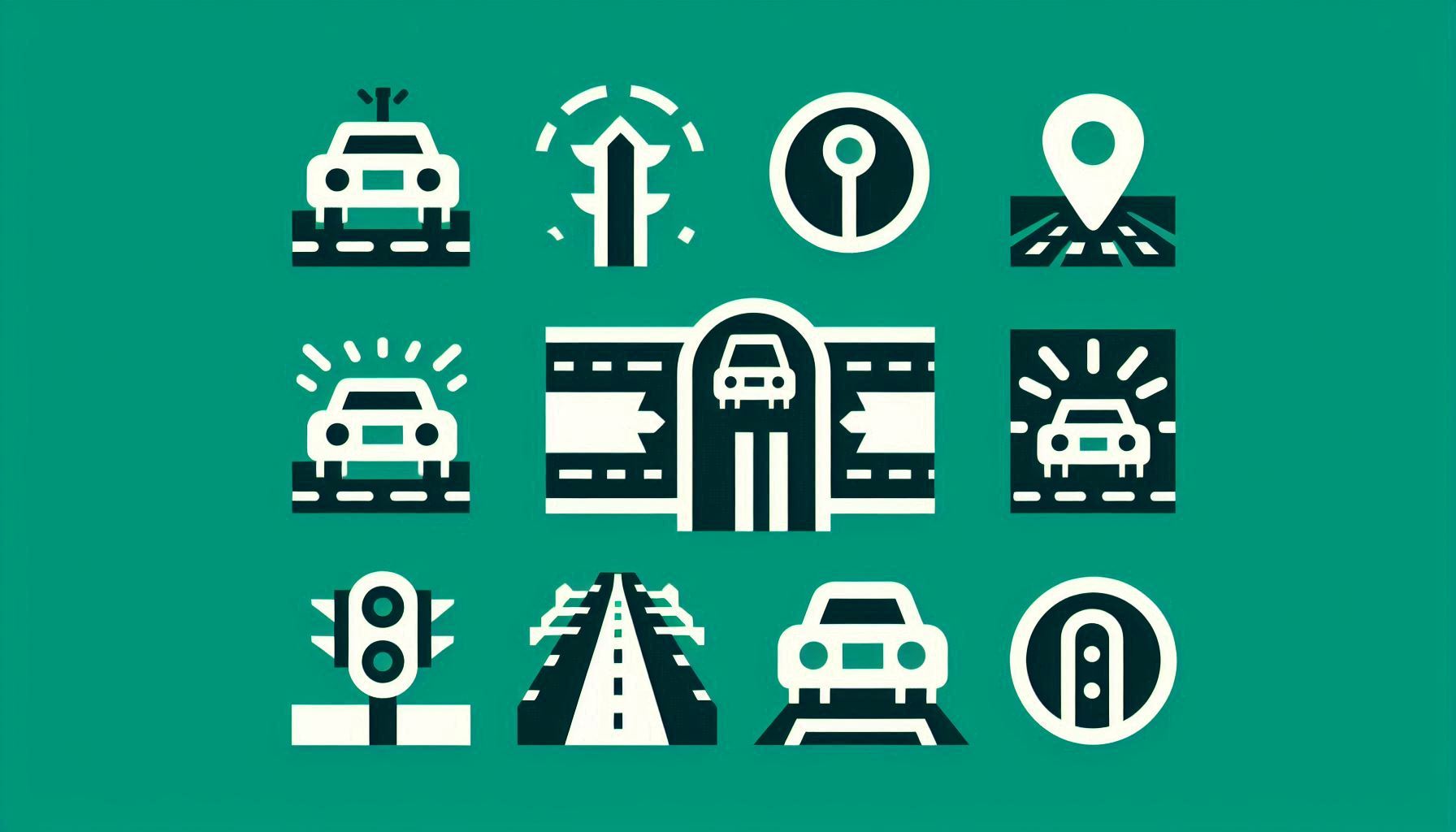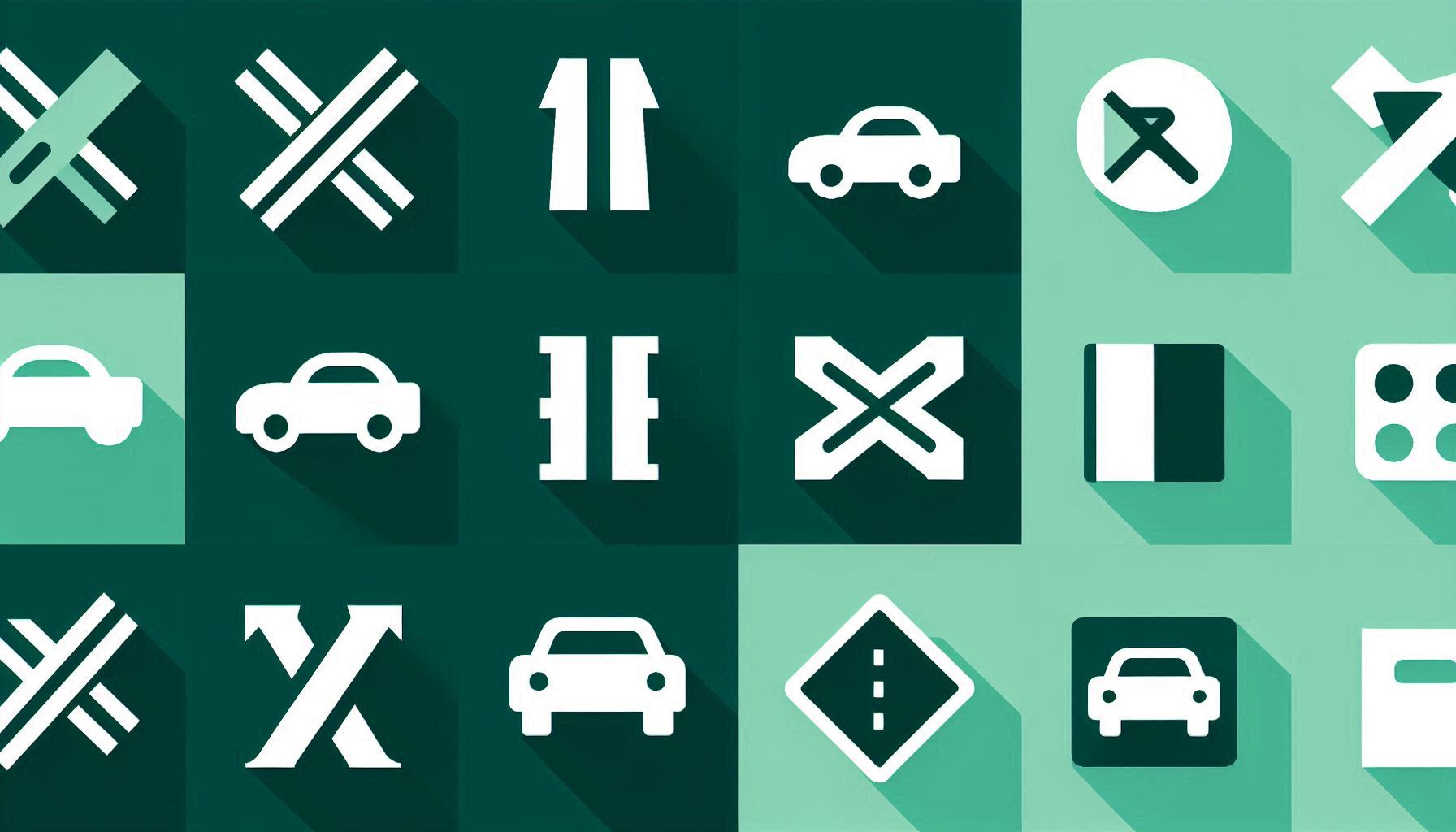Analysis of Traffic Conflicts at Roundabout Entrances and Exits – A Machine Learning Approach for Enhanced Safety

Downloads
As a component of the urban road network, roundabouts play a crucial role in ensuring operational efficiency. The safety performance of roundabouts significantly impacts overall traffic safety, making it necessary to conduct safety analysis and evaluation. This study utilises UAV to capture video of vehicle trajectory at roundabouts, employing the time to collision (TTC) index and vehicle evasive actions to identify and analyse traffic conflicts. A real-time traffic safety evaluation method has been developed using machine learning algorithms, including random forest (RF), support vector machine (SVM), extreme gradient boosting (XGBoost) and decision tree (DT) model. This method aims to analyse the relationship between traffic states and conflicts, providing insights into potential safety risks in various traffic conditions. The four machine learning algorithms trained a total of 12 models, with RF demonstrating superior training effectiveness. It achieved high accuracy in predicting traffic conflict areas at the entrances and exits of a roundabout, with a prediction accuracy of 0.86 and an AUC (area under the receiver operating characteristic curve) of 0.88. In addition, this paper further explores the relationship between traffic conflict and state. The results show that traffic flow, speed, density, speed standard deviation and vehicle type ratio have a significant relationship to traffic conflict. This research provides valuable insights for transportation authorities to understand the nature of traffic conflicts at roundabouts, enabling them to implement appropriate early warning systems and management strategies.
Downloads
Fu L, et al. Road traffic accidents (2022). China Statistical Yearbook. 2023:4-5.
Tao W, et al. A conflict risk graph approach to modeling spatio-temporal dynamics of intersection safety. Transportation Research Part C: Emerging Technologies. 2024;169:104874. DOI: 10.1016/j.trc.2024.104874.
Wei W, et al. Enhancing intersection safety in autonomous traffic: A grid-based approach with risk quantification. Accident Analysis and Prevention. 2024;200:107559. DOI: 10.1016/j.aap.2024.107559.
Lu Y, et al. An improved object detection and trajectory prediction method for traffic conflicts analysis. Promet - Traffic&Transportation. 2023;35(4):462-484. DOI: 10.7307/ptt.v35i4.173.
Paul AB, et al. Investigating and modeling the influence of PET-types on crossing conflicts at urban unsignalized intersections in India. International Journal of Injury Control and Safety Promotion. 2022;30(2):239-254. DOI: 10.1080/17457300.2022.2147194.
Shahana A, et al. Spatiotemporal variation of traffic conflict at signalized intersections under non-lane-based traffic condition. Transportation Research Record. 2023;2677(1):326-340. DOI: 10.1177/03611981221099288.
Li L, et al. The role of traffic conflicts in roundabout safety evaluation: A review. Accident Analysis and Prevention. 2024;196:107430. DOI:10.1016/j.aap.2023.107430.
Johnson MT. Effects of phi and view angle geometric principles on safety of multi-lane roundabouts. Transportation Research Record. 2023;2677:362-371. DOI:10.1177/0361198123115912.
Hu Y, et al. A high-resolution trajectory data driven method for real-time evaluation of traffic safety. Accident Analysis and Prevention. 2022;165:106503. DOI:10.1016/j.aap.2021.106503.
Cao JY, et al. Trajectory data-based severe conflict prediction for expressways under different traffic states. Physica a-Statistical Mechanics and Its Applications. 2023;621. DOI:10.1016/j.physa.2023.128595.
Arun A, et al. A systematic mapping review of surrogate safety assessment using traffic conflict techniques. Accident Analysis and Prevention. 2021;153:106016. DOI:10.1016/j.aap.2021.106016.
Lu J, et al. Learning the representation of surrogate safety measures to identify traffic conflict. Accident Analysis and Prevention. 2022;174:106755. DOI:10.1016/j.aap.2022.106755.
Ray Sarkar D, et al. A review of surrogate safety measures on road safety at unsignalized intersections in developing countries. Accident Analysis and Prevention. 2024;195:107380. DOI: 10.1016/j.aap.2023.107380.
Swanson JM, et al. Observing pedestrian-vehicle traffic conflicts in school zones to evaluate the effectiveness of road safety interventions and reduce injuries in Ghana, Vietnam, and Mexico, 2019-2021. Journal of injury & violence research. 2022;14:3. DOI: 10.5249/jivr.v14i3.1710.
Adjenughwure K, et al. Monte carlo-based microsimulation approach for estimating the collision probability of real traffic conflicts. Transportation research record. 2023;2677(9):314-326. DOI: 10.1177/03611981231159124.
Shawky M, et al. Traffic safety assessment for roundabout intersections using drone photography and conflict technique. Ain Shams Engineering Journal. 2023;14. DOI:10.1016/j.asej.2023.102115.
Li R, et al. Analysis of conflict distribution characteristics between motor vehicles and e-bikes at roundabouts. Applied Sciences-Basel. 2023;13. DOI:10.3390/app13063475.
Zhang S, et al. Prediction of pedestrian-vehicle conflicts at signalized intersections based on long short-term memory neural network. Accident Analysis and Prevention. 2020;148:105799. DOI:10.1016/j.aap.2020.105799.
Žura M, et al. Roundabout capacity estimation model considering driver behaviour on the exiting and entry flows. Promet-Traffic & Transportation. 2022;34:397-405. DOI: 10.7307/ptt.v34i3.3973.
Leonardi S, Distefano N. Turbo-Roundabouts as an instrument for improving the efficiency and safety in urban area: an italian case study. Sustainability. 2023;15(4). DOI:10.3390/su15043223.
Ortiz FM, et al. Road traffic safety assessment in self-driving vehicles based on time-to-collision with motion orientation. Accident Analysis and Prevention. 2023;191:107172. DOI:10.1016/j.aap.2023.107172.
Formosa N, et al. Predicting real-time traffic conflicts using deep learning. Accident Analysis and Prevention. 2020;136:105429. DOI:10.1016/j.aap.2019.105429.
Hang J, et al. An improved automated braking system for rear-end collisions: A study based on a driving simulator experiment. Journal of safety research. 2022;80:416-427. DOI:10.1016/j.jsr.2021.12.023.
Li D, et al. An integrated approach of machine learning and Bayesian spatial Poisson model for large-scale real-time traffic conflict prediction. Accident Analysis and Prevention. 2023;192:107286. DOI:10.1016/j.aap.2023.107286.
Chai H, et al. Trajectory-based conflict investigations involving two-wheelers and cars at non-signalized intersections with computer vision. Expert Systems with Applications. 2023;230. DOI:10.1016/j.eswa.2023.120590.
Tageldin A. and T. Sayed. Models to evaluate the severity of pedestrian-vehicle conflicts in five cities. Transportmetrica a-Transport Science. 2019;15:354-375. DOI:10.1080/23249935.2018.1477853.
Mattas K, et al. Driver models for the definition of safety requirements of automated vehicles in international regulations. Application to motorway driving conditions. Accident Analysis and Prevention. 2022;174:106743. DOI:10.1016/j.aap.2022.106743.
Patel H, et al. Novel traffic conflict-based framework for real-time traffic safety evaluation under heterogeneous and weak lane-discipline traffic. Transportation Research Record. 2024;2678:118-134. DOI:10.1177/03611981231172962.
Gore N, et al. Traffic conflict assessment using macroscopic traffic flow variables: A novel framework for real-time applications. Accident Analysis and Prevention. 2023;185:107020. DOI: 10.1016/j.aap.2023.107020.
Orsini F, et al. Conflict-based real-time road safety analysis: Sensitivity to data collection duration and its implications for model resilience. Transportation Research Record. 2024;2678(1):460-422. DOI: 10.1177/03611981231171151.
Yang L, et al. An improved object detection and trajectory prediction method for traffic conflicts analysis. Promet-Traffic & Transportation. 2023;35:462-484. DOI:10.7307/ptt.v35i4.173.
Hu L, et al. Research on identification model of vehicle conflict risk area at road roundabout. Transportation Systems Engineering and Information. 2024;24(01):168-178. DOI:10.16097/j.cnki.1009-6744.2024.01.017.
Yuan C, et al. Using traffic flow characteristics to predict real-time conflict risk: A novel method for trajectory data analysis. Analytic Methods in Accident Research. 2022;35:100217.
Abdur-Rouf K, Shaaban K. Comparing traffic noise levels between signalized intersections and roundabouts in an urban environment. Transportation Research Record. 2022;2676:608-619. DOI:10.1177/03611981221088219.
Wen HY, et al. Analyzing the impact of curve and slope on multi-vehicle truck crash severity on mountainous freeways. Accident Analysis and Prevention. 2023;181:106951. DOI:10.1016/j.aap.2022.106951.
Russo B, et al. Analyzing the impacts of intersection treatments and traffic characteristics on bicyclist safety: development of data-driven guidance on the application of bike boxes, mixing zones, and bicycle signals. Transportation Research Record. 2023;2677:187-200. DOI:10.1177/03611981231167414.
Copyright (c) 2025 Yuzhou DUAN, Zhipeng LIN, Yulong WANG, Qiaowen BAI

This work is licensed under a Creative Commons Attribution-NonCommercial 4.0 International License.




















